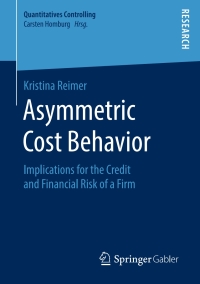Question
Ceres Gardening Company Please use the data provided below to answer (give an analytical view) the following questions For Years Ending December 31: 2002 2003
Ceres Gardening Company
Please use the data provided below to answer (give an analytical view) the following questions
For Years Ending December 31: 2002 2003 2004 2005 2006E
Sales Growth 8.7% 9.3% 19.8% 21.4%
Return on Equity 23.70% 21.23% 17.90% 17.85% 16.04%
Return on Sales 4.83% 4.83% 4.37% 4.24% 3.60%
Gross Profit % 17.00% 19.00% 18.60% 18.50% 17.60%
Expenses/Sales 8.93% 8.74% 8.82% 8.83% 8.97%
Operating Profit % 6.66% 8.72% 8.22% 8.08% 7.09%
Asset Turnover 2.32 1.94 1.60 1.54 1.51
DSO 52 60 85 107 124
Inventory Turnover 6.62 7.77 7.45 8.69 9.13
Fixed Asset Turnover 7.35 5.28 4.54 4.93 5.43
Equity Multiplier 2.116 2.268 2.560 2.741 2.940
ST Debt/Assets
LT Debt/ Assets 33.61% 34.40% 34.16% 34.37% 32.47%
Covenants
Max LTD < 3.25 x EBITDA 1.80 1.73 2.18 2.32 2.48
Min EBITDA > 2.0 x Interest + Lease Payments 10.64 7.89 2.04 2.24 2.27
Purpose:
Use the DuPont analysis system to identify sources of superior performance and causes of weaker performance.
Directions:
Ratio analysis: review the growth trend and use the DuPont process (ROE = ROS x AT x EM) to identify strong and weak points in preparation for Wydown's meeting with the bank.
Task:
- Based on Exhibit 4, what has been the sales percentage growth trend over the past years? Based on the Ceres case information, can you theorize on the cause(s) of the large bump in sales for 2005?
- Looking further at the sales trend, on p. 5 of the case, it is noted that 'based on limited sell-through estimates from the sales force, dealer inventories were approximately $23 million at the end of 2006, compared with $10 million in the prior year, and that Wydown was comfortable with these figures. Would you agree or disagree with Wydown on this point? Explain why.
- Moving to the DuPont ratio values in the attached spreadsheet through 2006, what is the trend with Return on Equity? To which subsidiary ratios (the ratios which make up Return on Sales (Gross profit, Expenses to sales, and Operating profit) and Asset Turnover (DSO, Inventory turnover, and Fixed asset turnover)) would you trace the cause(s) of the trends observed? Going back to the case, what changes in Ceres' business practices were likely responsible for these changes in ratio values?
- What is the status of the two debt covenants (Case, p. 5) at the end of 2006?
- Maximum Long-term debt to Earnings before interest, taxes, depreciation, and amortization (EBITDA) ratios, and
- EBITDA to Fixed financial charged ratio
From the perspective of the bank, is this favorable or unfavorable? Explain why.
a. If you are trying to trace this to the Ceres statements, dealer inventories that have not yet been paid for showing up on Ceres' books as accounts receivable because Ceres recognizes the sale, and books the account receivable, when the products are shipped to the dealer, not when they are sold to the end customer. This is allowed because that is when the title to the products passes to the dealer. In 2005 the $10 million mentioned above rough matches with the $10.286 million in receivables on the Case Ex.2 Balance Sheet. At the end of 2006, the dealer inventories are mentioned as $23 million, however, Ceres' receivable balance was only $14,471 million, indicating that the difference, $8.529 million, had been paid for by the dealers but remained in their inventory.
b. The debt covenants mentioned in Exhibit 4(d) are certain financial ratio values that the bank requires Ceres to maintain (stay above or below the ratio value, as the case may be). If the covenants are not maintained, Ceres must notify the bank immediately, and Ceres could be declared 'in default' by the bank. Being in default has a host of undesirable consequences for Ceres, so that is something they would strongly want to avoid.
c. for long-term debt, also include the current portion, which shows up in current liabilities. EBITDA = EBIT + Depreciation and amortization.
d. Fixed financial charges = Interest expense + required minimum annual rentals for the Lancaster, PA, and Fulton, MO locations mentioned in Ex. 4(c) Long term leases.
Step by Step Solution
There are 3 Steps involved in it
Step: 1

Get Instant Access to Expert-Tailored Solutions
See step-by-step solutions with expert insights and AI powered tools for academic success
Step: 2

Step: 3

Ace Your Homework with AI
Get the answers you need in no time with our AI-driven, step-by-step assistance
Get Started


